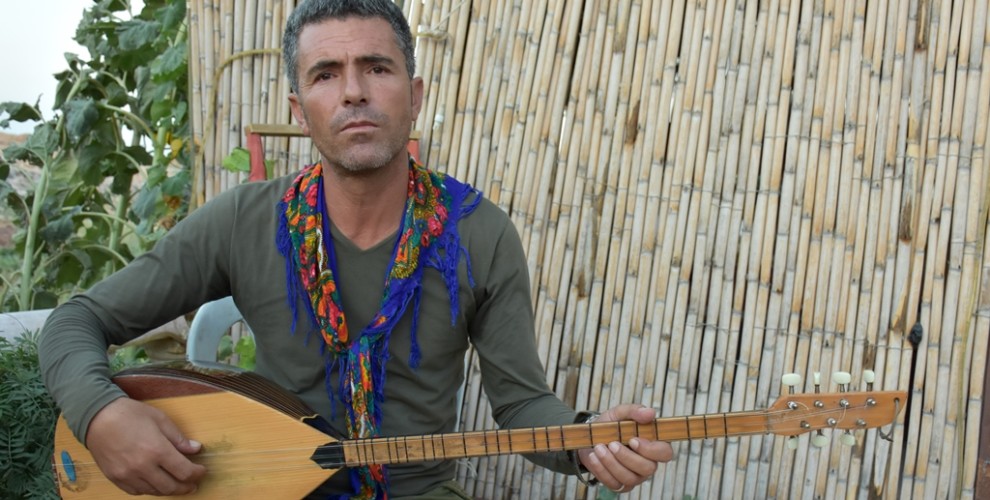Relating Afrin’s history and culture through music
Kurdish Dengbêj Ehmed Xanî sings and records folkloric works of art that reflect the history and culture of the Afrin region.
Kurdish Dengbêj Ehmed Xanî sings and records folkloric works of art that reflect the history and culture of the Afrin region.

The Dengbêj Ehmed Xanî is from the Kefferromê village of Afrin’s Shera district, and is renowned for his art and songs in the region. Ehmed Xanî has recorded 11 albums reflecting the history and culture of the region.
Ehmed Xanî’s influences in his art are Dengbêjs Evdê Shehrê and Hesen Nazî from the Afrin region, and he has been singing strans (Kurdish songs) since he was 8.
Ehmed Xanî released his first album “Types of Kurdish Folklore” in 2000 and has been part of the Afrin Council of Culture and Arts since the beginning of the Rojava Revolution. He has recorded several songs about the ongoing resistance in Rojava, and is currently part of the Kurdish Artists Union.
Ehmed Xanî’s strans and kilams about the resistance ringed throughout the city during the invading Turkish state’s barbaric attacks against Afrin.
Xanî’s latest release is a song called “Lêxe YPG’ê Lêxe” (“Strike YPG Strike”), and the video for the song was shot as bombs fell from Turkish fighter jets during the attacks against Afrin.
Ehmed Xanî is currently living in the Serdem Camp in Shehba, and his songs reflect the pain of the people.
Xanî says he became a dengbêj (traditional Kurdish folk singer) to preserve Kurdish history and culture, and added that all artists use the word “Yar” (“beloved”) instead of Kurdistan, because the name has been banned by the hegemons.
Xanî says Kurdish history has been preserved orally by artists and intellectuals, and that everybody has met freedom with the Rojava Revolution.